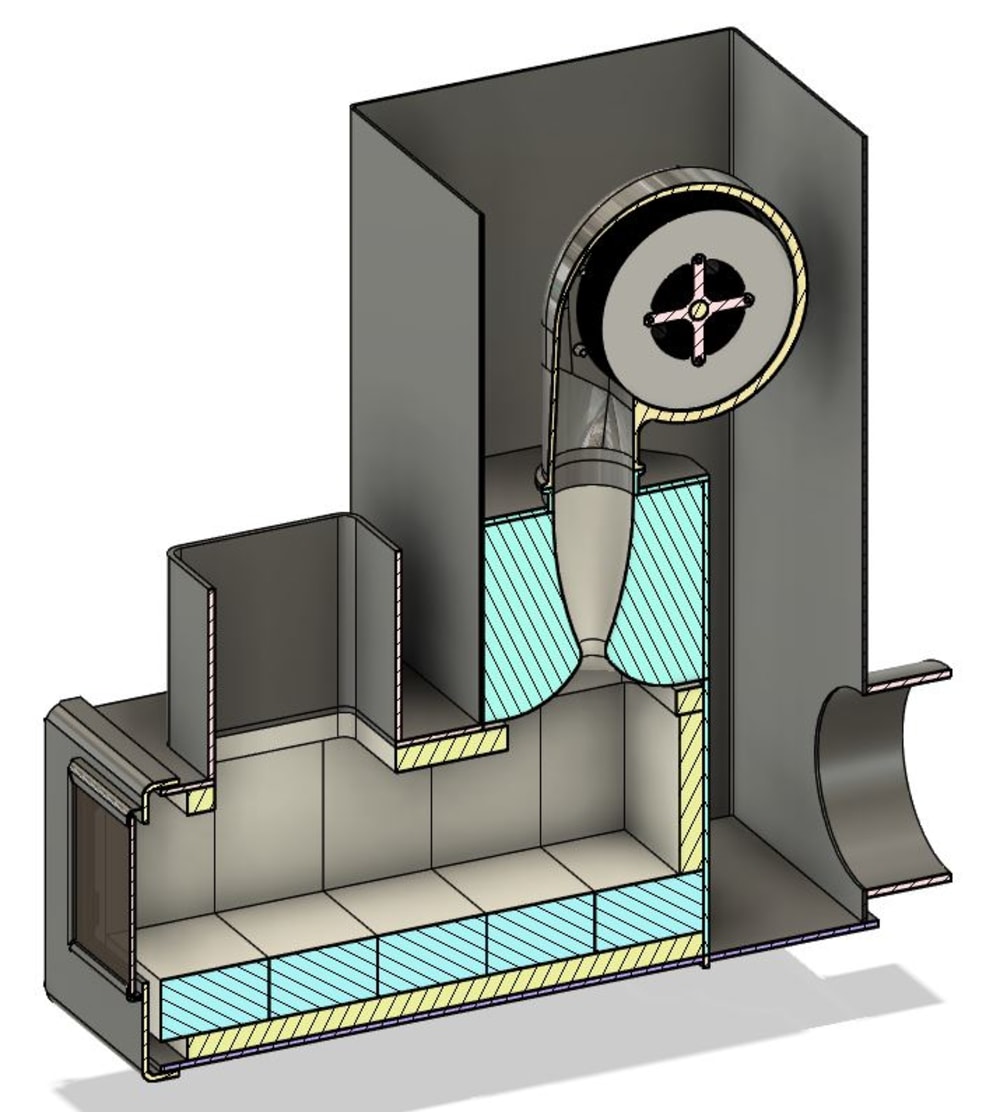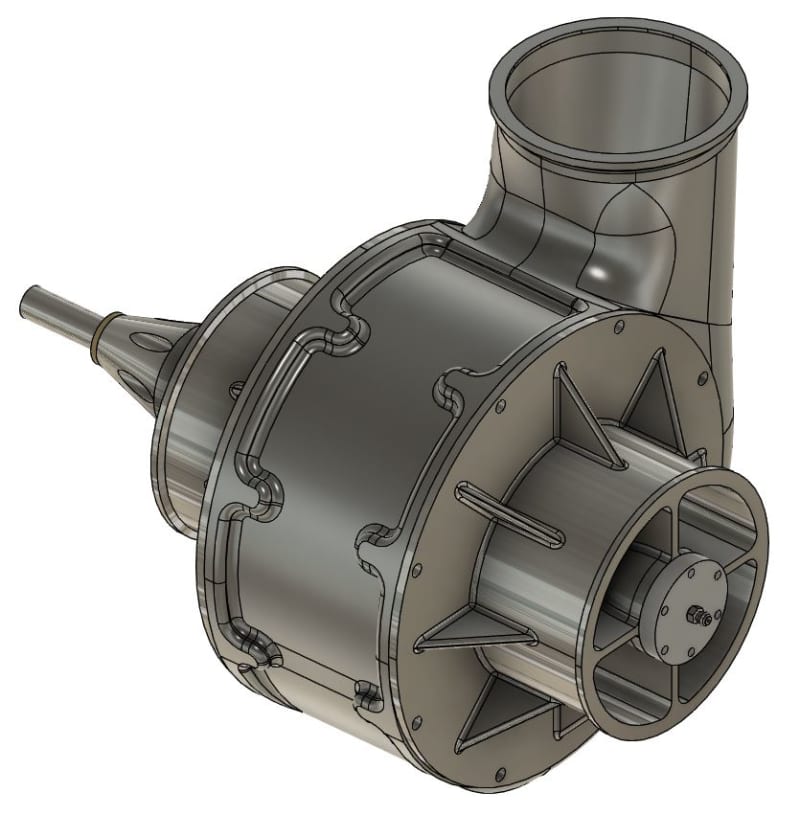We are developing a new generation of solid fuel combined heat and power microturbine system. Fuels include woodchips, waste plastics, waste biomass, fuel pellets, agricultural waste, and any combustible solid, as well as conventional fuels such as propane, natural gas, heating oil, waste oil, vegetable oil, etc. This makes the system backwards compatible with current supply chains ergo more likely to be adopted. Previous attempts to integrate commercially available emissions reducing catalysts into the design of pellet and rocket stoves have been challenging due to the tendency for the lattice to clog with ashes. We have conceptually invented a novel catalytic combustor by electroplating catalytic metals to the discs of a Tesla microturbine.
The Tesla turbine is a perfect fit for this mission profile, as bladed turbines would erode due to entrained ashes/particles in the combustion gases, whereas Tesla turbines are virtually impervious to entrained particle contamination. The centripetal force of the turbine will prevent ash from accumulating, thus creating a self-cleaning catalytic combustor that is virtually maintenance free. This catalytic combustor/turbine hybrid will be fed by combustion gases that will be accelerated to supersonic speeds via a refractory de Laval nozzle cast directly into the combustion chamber of a rocket stove in order to improve the efficiency and power output of the turbine. Catalysis rates will be increased due to the vastly larger surface area of the tightly packed discs in the turbine as well as the longer residence time of the spiral flow of the gas through the turbine. The turbine and compressor are to be electrically de-coupled to provide full range of control and integrate directly into solar battery systems. The DC motor will spool up the compressor faster than the natural acceleration offered by the turbine of a typical common-shaft turbine. This faster pressurization of the combustion chamber will prevent backdrafting and allow for a considerably faster warmup time which reduces emissions during the ignition phase of the heater’s operation. The motor will also be capable of controlling the burnout phase of the heater in order to further reduce emissions. Tachometers, anemometers, thermometers, and O2 sensors will be integrated into the heater to provide real time feedback to better control emissions and power output.
This combination of catalytic turbine, compressor, motor-generators, and sensors will allow for air inlet and feed control in order to maintain ideal operating conditions throughout all stages of operation. Control will be both local operation and remote operation. Integration into HVAC and central air systems to extract waste heat for space heating and water heating. Fully compatible with 24 and 48 volt solar power system integration. Expected power output is 5 kilowatts on low, and 20 kilowatts on high. Expected average fuel consumption is 100k BTU's per hour. HHV is expected to exceed 85%. Project is currently at technology readiness level 3. Suitable use case examples include off-grid solar systems in arctic regions when winter weather makes solar panels ineffective for much of the season, rural communities in developing nations, etc.
Like this entry?
-
About the Entrant
- Name:Sky Huddleston
- Type of entry:teamTeam members:
- Phillip Huddleston
- Brady Gupton
- Software used for this entry:We used Fusion360, Sheetcam, Flashcut, Draftsight, and Cura
- Patent status:pending








